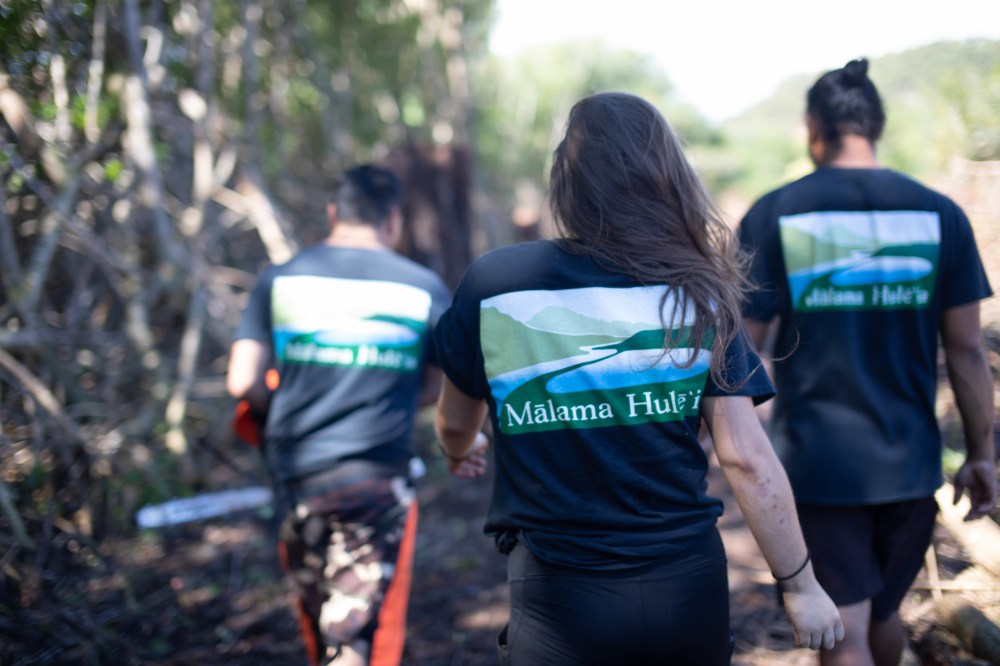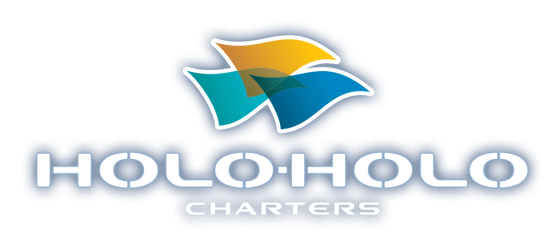Alakoko Fishpond & Mālama Hulē‘ia
Holo Holo Charters cares deeply about protecting the ocean and land, environmental stewardship, preserving native Hawaiian ecosystems, and community projects that support Hawaiian culture, history, and values. We strive, as a company and as individuals, to do better and be better every day.
Holo Holo’s Sustainability Mission Statement highlights our ongoing commitment to a sustainable environment as we strive:
To be the most ecologically conscious boat tour company on Kauaʻi by providing a positive impact on our island resources and the local community. We believe that taking people out for amazing experiences on the ocean will ignite an existing desire to protect the ocean and ecosystems.
To achieve this goal, we have partnered with a long list of local, eco-focused organizations and programs over the years to have a greater, more positive impact on our local environment. We are proud to be a part of the following:
The Hawaii Tourism Authority’s (HTA) Qurator, the Hawaiʻi Green Business Program, the Sustainable Tourism Association of Hawaiʻi (STAH), and Carbon Buddy.
We are also certified as an “Ocean Friendly Restaurant” by the Surfrider Foundation and support Reef Guardians of Hawaiʻi, among many other environmentally-forward organizations.

Hawaiʻi Community Foundation – Kauai Photographer Kit
In alignment with our principles, ethics, environmental commitment, and business practices, we are featuring Alakoko Fishpond & Mālama Hulē‘ia in today’s blog. Read on to discover the history of Alakoko Fishpond, Mālama Hulēʻia, and how you can get involved in community restoration efforts.

Alakoko Fishpond
Alakoko Fishpond, also known as the Menehune Fishpond, is an ancient fishpond in Līhuʻe, on the east side of Kauaʻi, built over 600 years ago by the Menehune people. (1) This legendary fishpond is one of the earliest, most successful forms of aquaculture on Kauaʻi. (2)
The Menehune, Hawaiʻi’s earliest inhabitants who intelligently managed the land and water, constructed a 2,700-foot-long wall made of stone and earth along the Hulēʻia River. (3) This historically significant wall strategically cut off a bend in the river, producing a calm fishpond where fish, seaweed, and other seafood thrived. The fishpond provided the local community with vital, abundant, and sustainable sustenance for centuries. (4)
Fast forward to the early 1900s, when mangroves were introduced to the area along the river to stabilize the eroding coastline; the deep roots of these invasive trees choked out the native vegetation, causing sediment buildup in the river, resulting in a much smaller fishpond. (5)
It wasn’t until 1973 that the Alakoko Fishpond was listed on the National Register of Historic Places, and in 2009, it was designated “one of Hawaiʻi’s most endangered historic places by Historic Hawaiʻi Foundation, selected for its vulnerability to environmental degradation and development.” (6)

Hawaiʻi Community Foundation – Kauai Photographer Kit
Mālama Hulēʻia
Mālama Hulēʻia is a community-based local non-profit serving the sacred Hulēʻia River, Alakoko Fishpond, and the surrounding area. In November 2021, Mālama Hulēʻia, the Trust for Public Land, and generous donors purchased the 102-acre property to protect it from future development, keep it in community hands, and restore the endangered fishpond and adjacent land. (7)

Hawaiʻi Community Foundation – Kauai Photographer Kit
Mālama Hulēʻia’s Mission is straightforward: “Mālama Hulē‘ia advocates, educates, and leads community efforts to remove red mangrove along the Hūle’ia River, re- establishes native wetland ecosystems and creates an environmental stewardship program honoring Hawaiian values.” (8)
Mālama Hulēʻia has been actively working on its strategic plan since 2019, even before purchasing the land. The plan is ongoing through 2024 with the following guiding principles in place:
- Remove invasive red mangroves and restore native wetlands.
- Ensure stewardship of each restoration site.
- Engage the community.
- Use Hawaiian Values and Practices.
- Educate
The following five goals support the guiding principles:
- Remove 32 acres of mangrove within the Hulē‘ia River Watershed.
- Establish native plant communities.
- Coordinate stewardship efforts.
- Preserve the integrity of the loko iʻa (fishpond)
- Establish landowner agreements for mangrove removal, native planting, and stewardship. (9)
Read the detailed goals and strategies of the Mālama Hulēʻia Strategic Plan here: https://malamahuleia.org/wp-content/uploads/2019/02/stategicplanmhf3.pdf.

Hawaiʻi Community Foundation – Kauai Photographer Kit
How to Get Involved
The ongoing efforts to save and preserve the ancient Alakoko Fishpond are deeply rooted in Hawaiian culture, history, sustainability, resiliency, education, and deep commitment to aloha ʻāina (love the land).
Ramolete Hayashi, Aloha ‘Āina Project Manager for the Trust for Public Land, expands on the importance of preserving the past for future success, saying:
The traditions surrounding fishponds hold important lessons. Indigenous lifeways have a lot to teach us about how we can address modern-day problems and live sustainably. We’ve made a lot of mistakes—introducing mangroves as a one-size-fits-all solution, building military bases and tourist destinations over fishponds, teaching science and math from books in a four-walled classroom.
The solutions are here. They are homegrown and grounded in Native Hawaiian worldviews and technologies. They spring from a deep love for and intimacy with the land. Care for it as a relative, and it will care for you in return. (10)
There are plenty of ways to get involved with preserving the Alakoko Fishpond. Continued efforts and community involvement are essential to the continued restoration efforts on and along the river, whether on the historic wall restoration, sediment management, environmental education programs, or monetary donations.
To learn more and get involved with protecting and restoring the Alakoko Fishpond, visit restorethefishpond.org
(1-7,10): https://www.tpl.org/blog/kauai-alakoko-menehune-ancient-fishpond-protected
(8): https://malamahuleia.org/about-malama-huleia/
(9): https://malamahuleia.org/wp-content/uploads/2019/02/stategicplanmhf3.pdf
Content Creation by Jessica Stein

